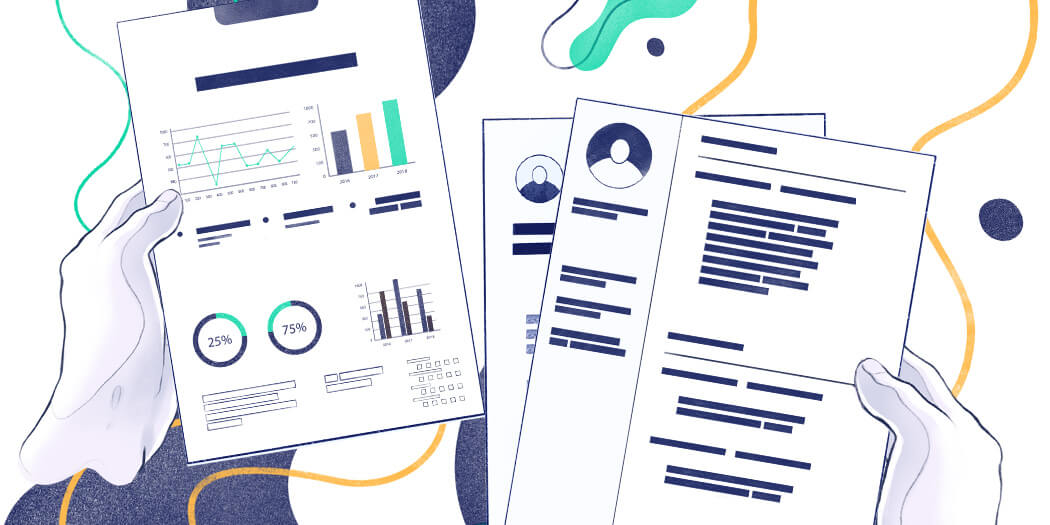The Pareto Principle, or the 80/20 rule, states that for many phenomena 80% of the result comes from 20% of the effort. The principle has been named after Vilfredo Pareto—an Italian economist—who, back in 1895, noticed that about 80% of Italy’s land belonged to 20% of the country’s population.
Upon discovering this inequality, Pareto surveyed other countries only to discover that wealth was distributed more or less in similar (dis)proportions everywhere.
It’s not a new concept that many natural as well as man-made phenomena are distributed unequally, or—to put it scientifically—according to a power-law distribution.
Truth be told, the Pareto principle isn't that much different from the power-law distribution itself.
Just like Zipf’s law.
Often, the three concepts (power law, Pareto principle, and Zipf’s law) are confused as denoting three unrelated laws, but they can all refer to the same thing.
In essence, they tell us that most of the time things are distributed unevenly. And out of the three principles, the Pareto rule has become synonymous with the 80/20 distribution.
Although originally the Pareto principle referred to the distribution of wealth, it can be applied to a wide variety of contexts, for instance:
- Taxation—where 80% of tax money comes from about 20% of society.
- Project Management—where 80% of the effect results from 20% of the effort.
- Businesses—that get 80% of their income from 20% of their customers.
- IT—where 80% of system crashes are caused by 20% of bugs.
The list goes on and on as the principle is very versatile (more examples will follow).
Additionally—
The Pareto principle came to signify the inequalities of modern society. A 1992 report on human development issued by the UNDP (United Nations Development Programme) incorporated a diagram which illustrated that over 87% of the world’s income was in the hands of the richest 20% of people.
Since the shape of the diagram resembled a champagne glass, it’s been referred to as the champagne glass effect ever since.
To reiterate: Pareto’s principle is more of an observation than a full-fledged scientific theory. It is commonly noticeable in a variety of contexts—but it’s not applicable to each and every scenario. Plus, the numbers 80 and 20 should not be added up to 100. The fact it’s called the 80/20 rule is a simply a catchy, historical catchphrase.
The 80/20 Rule—Examples from Various Fields
Here’s the thing—
Most websites will illustrate the Pareto principle with copy-pasted examples with no citations. Take a look:
- 80% of car accidents are caused by 20% of young people
- 80% of lottery tickets are bought by 20% of society
- 80% of air pollution is caused by 20% of the population
- 80% of all firearms are used by 20% of the population
- 80% of all Internet traffic belongs to 20% of websites
- 80% of car crashes happen within the first 20% of the distance covered
- 80% of mobile phone calls come from 20% of the population
- 80% of the time people use 20% of the tools at their disposal
Plus, the Pareto principle is typically presented from the business perspective only.
We went that extra mile, though, and below you’ll also find examples from less obvious fields. Let us start with the most disturbing example of 2020—
80/20 Rule of COVID-19 Transmission
According to a preprint pending publication, it is estimated that 20% of cases were responsible for 80% of local transmission. This means most people won't infect too many other people, but rather there exist so-called superspreaders (and superspreding events) that cause many more to fall ill. Take Patient 31 for example—a Korean churchgoer who tested positive and attended mass, reportedly transmitting the coronavirus onto a thousand fellow worshipers.
80/20 Rule in Marketing and Business
One of the most common contexts for the 80/20 rule is in the marketing and sales activities of companies. While it’s often repeated that 80% of any company’s profit is generated by 20% of its customers, the same proportions could extend to other areas of business activity, for example:
- 80% of complaints come from 20% of customers.
- 80% of profits come from 20% of the company’s effort.
- 80% of sales come from 20% of products or services.
- 80% of sales are made by 20% of sellers.
- 80% of clients come from 20% of marketing activities.
What does this mean in practice?
To maximize their efficiency businesses should focus on the vital 20% of activity.
So—in this case, the Pareto principle becomes the Pareto methodology. And the first step to implementing it is to identify which activities comprise the vital 20%. One way of doing so is, for example, by using the so-called Pareto diagrams.
Mind you, though:
The 80/20 principle does not suggest that the remaining 80% can be simply ignored—it may just require less focus.
After all—
Only a complete whole can function just the way it was intended.
80/20 Rule in Time-Management
The Pareto principle also comes in handy in the context of time-management.
Once you realize that 80% of your outcomes come from 20% of the time and effort you spend on them, the importance of prioritizing becomes obvious.
For example—
If you have a 10-item to-do list with each task being equally time-consuming, you can boost your efficiency by identifying and completing two top-priority tasks. As a result, even if you don’t manage to do all the remaining tasks, the 20% you completed could amount to up to 80% of the impact.
In practice, this approach can suggest that for, say, a freelance web designer who starts working on a new project, it could be more impactful to deliver five website concepts (20%) for a client to choose from than a single fully functional website.
Thanks to incorporating Pareto's principle into your time-management strategy you can maximize your efficiency by limiting the amount of time you spend doing something.
This is especially beneficial for executives and managers who can fall back on Pareto’s principle to decide which tasks they want to tackle (i.e. the crucial 20%) and which ones to delegate (the remaining 80%).
The Pareto Principle in Computing
In the world of computer science, Pareto’s principle is visible in at least several prominent areas.
It’s commonly said that 80% of users will only use 20% of any piece of software's features. Microsoft also observed that 20% of software bugs will cause 80% of system errors and crashes.
More than this:
Studies show how the 80/20 rule can be applied to software development.
Just like with time-management, by identifying the tasks that can be ignored, the effort of the IT teams can be reduced to 20% of its original estimate while achieving 80% of the intended output.
What is the Pareto Principle in Sport?
The Pareto principle is also noticeable in the world of sports, though to varying extents.
For example, studies show that the 80/20 distribution (top 20% of players being responsible for 80% of the team’s success) applies more to basketball than ice hockey.
Why? In the NBA, 80% of the total number of points is attributed to 20% of top players. In contrast, studies show that the Pareto principle does not apply to NHL players, and the distribution of both points and salaries is much more even.
80/20 Principle: Lies & Dishonesty in Society
Studies reveal that a small number of people are responsible for a large number of lies and the bulk of dishonesty in society—with the distribution reflecting the Pareto principle. For example, one study found that about 60% of participants reported telling no lies whatsoever, while almost 50% of all lies were told by 5% of the study subjects. (But we’ll take this with a grain of salt because some liars might be lying about their lying).
Pareto 80/20 Rule in Alcohol Consumption
Other studies reveal that the Pareto principle could be useful in the alcohol industry, especially in the context of planning marketing activities (e.g. whether to increase the penetration of the brand, brand loyalty, or purchase frequency). It seems that different alcohol categories, such as beer, wine, and spirits follow different consumption patterns of the heavy users who account for the category’s turnover to a various extent. Plus, studies show that the top 10% of alcohol drinkers are responsible for more than 50% of all alcohol consumed in the US any given year.
Pareto Principle in Dating Online
The Pareto principle seems to be observable in the world of online dating too with data showing that “the bottom 80% of men (in terms of attractiveness) are competing for the bottom 22% of women and the top 78% of women are competing for the top 20% of men.”
80/20 Pareto Principle in Bird-Watching
Bird watchers can benefit from the knowledge of the 80-20 ratio too. How? A study revealed that 80% of all bird sightings come from 20% of the most common birds.
Pareto’s Principle in Health Services
For instance, a 2012 study by the US Department of Health & Human Services revealed that only 5% of Americans were responsible for up to 50% of the US health care expenditure.
Pareto Principle and Homicide Rates
The Global Study on Homicide report shows a huge disproportion between the number of crimes committed by men vs. those committed by women. Of all people convicted of intentional homicide a whopping 95% were males. Interestingly, males also happened to account for 80% of all homicide victims globally.
Pareto's Principle and Domestic Violence
Studies reveal that men comprise the majority of domestic violence perpetrators (83%). Also, a large proportion of acts of domestic violence is attributed to a relatively small number of people. For example, one study revealed that 2% of repeat offenders were responsible for as much as 50% of all harm associated with domestic violence.
The 80/20 Rule and Emoji
According to a recent publication from the Unicode Consortium, only three out of 2,600+ emojis—?, ❤️, and ?—account for 20% of overall emoji use. To give you more of a context, Facebook users alone send about 1 billion emojis daily.
Other 80/20 Rule Examples
As already established, power-law distributions are often indistinguishable from one another—one man’s Pareto is another’s Zipf and the other way round. No matter which principle feels closer to your heart, studies say the power-law distributions are also observable in:
- Word usage in human languages—a relatively small percentage of words is used most often in communication (Pareto); the most frequently used word will be twice as frequent as the second most popular, and three times as frequent as the third, and so on (Zipf).
- Populations of cities—a large part of any country’s population lives in a relatively small number of cities (Pareto); the most populous city in a country will be twice as large as the second biggest, and three times as large as the third-largest city, and so on (Zipf).
- Website traffic—a large part of the entire website traffic will come from a relatively small number of pages (Pareto); the highest traffic page will have twice as much traffic as the second-highest traffic page, and three times as much as the third one, and so on (Zipf).
How the Pareto Principle Can Help You
There are many ways in which you can put the Pareto principle to good use. Here’s a couple of ideas:
Planning Your Day
Since 20% of your effort amounts to 80% of the effect of your work, you should consider which activities comprise the vital few you need to focus on. To maximize your efficiency, you must identify them and work on them first. Mind you, though, you should not neglect the other tasks. Move on to doing them once you clear the big ones.
Delegating
As an executive or manager, you may feel that time isn’t exactly on your side—this is when delegating comes in handy. However, it may be a bit of a problem to decide which things you should do yourself and which ones could be handed over to your team. Not if you know the 80/20 rule. Focus on the vital 20% and delegate the rest.
Risk Assessment
How to monitor risks? Once you realize that 20% of risks can cause 80% of setbacks, you’ll know that to minimize any possible damage you must identify and closely monitor the 20%. The rest needs to be monitored too, but the relative damage it can cause is much less serious.
Sales and Marketing
If 80% of your income comes from 20% of your customers, optimize your products, services, and advertising for the 20%. Even if not everyone ends up happy about your choices, the bottom line will be in your favor.
Focusing on a narrow set of the most impactful changes that can be made in your personal of professional life can bring about great improvement but also highlight the concentrated risk that exists with any changes in these decisions. In other words, changing 20% of your life or work represents a high risk/high reward scenario. If handled well, it can lead to disproportionate improvements, while handled poorly, it can result in outsized detrimental impact.
In my business environment, I attempt to isolate central touchpoints for all other areas of my work responsibilities. From there, I seek ways to automate or improve those processes in the hopes of benefits cascading throughout my work. However, because of the centrality of these activities, I need to be extremely careful when implementing changes as they can lead to widespread problems.
Challenges of the Pareto Principle
Thanks to its flexibility, the Pareto principle has been readily adopted by more and more organizations to increase their effectiveness and efficiency.
No wonder.
The promise of being able to deliver 80% of the goal by focusing on 20% of the activities does look enticing.
The problem is—
How to identify the vital few?
Traditionally, the Pareto charts have been pretty handy.
But with the advancement of analytical tools that foster a data-driven approach to business, new algorithms are being developed and the future of the 80/20 rule lies with artificial intelligence.
AI could ultimately help companies identify the vital few with far greater precision. Moreover, it can help accurately predict future trends thus allowing organizations to focus their efforts on disruption.
For the rest of us, the 80/20 rule will serve as both a stark reminder of things not being equal for everybody and a useful tool for planning our time and effort effectively.
Key Points
The Pareto principle stipulates that most of the time things are distributed according to the 80/20 proportion. Its application is universal enough to span business (e.g. 20% of business activities bring 80% of the company’s income) as well as day-to-day life (e.g. 80% of the time you’ll be wearing the same 20% of your clothes). The rule itself isn’t as much a scientific theory as an observation that things are distributed unequally most of the time. As such, it’s been used to show that the world’s wealth belongs to a small percentage of the wealthy, or to help people distribute their effort and plan time in a more effective manner.





